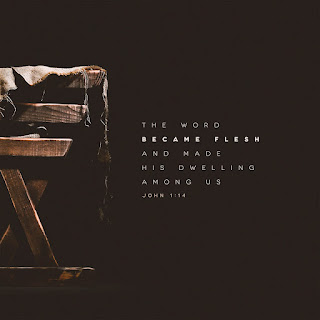The Nicene Creed
We believe in one God, the Father, the Almighty maker of heaven and earth,of all that is,seen and unseen.
We believe in one Lord, Jesus Christ, the only Son of God,eternally begotten of the Father,God from God, Light from Light, true God from true God,begotten, not made,of one being with the Father. Through him all things were made. For us and for our salvation, he came down from heaven, was incarnate of the Holy Spirit and the virgin Mary, and became fully human. For our sake he was crucified under Pontius Pilate. He suffered death and was buried. On the third day he rose again in accordance with the Scriptures. He ascended into heaven and is seated at the right hand of the Father. He will come again in glory to judge the living and the dead, and his kingdom will have no end.
We believe in the Holy Spirit, the Lord, the giver of life, who proceeds from the Father and the Son, who in unity with the Father and the Son is worshiped and glorified, who has spoken through the prophets.
We believe in one holy catholic* and apostolic Church.
We acknowledge one baptism for the forgiveness of sins.
We look for the resurrection of the dead, and the life of the world to come. Amen.
- - -
* This reference is to the church universal. The creed existed before the word catholic was applied to the Roman Church.
We stand on the shoulders of long line of faithful Christians who have gone on before us, who now with Christ our Lord seated in the heavenly coliseum, cheering us on as we run the race set before us. They formulated the creed to define the doctrines and firmly establish the pillars on what our faith and beliefs stand on.
The Nicene Creed (; Greek: Σύμβολον τῆς Νικαίας; Latin: Symbolum Nicaenum) is a Christian statement of belief widely used in liturgy. It is the defining creed of Nicene Christianity.
It is named for the city of Nicaea (present day İznik, Turkey) where it was originally adopted by the First Ecumenical Council, in 325. In 381, it was amended at the Second Ecumenical Council, at Constantinople. The amended form is also referred to as the Nicene Creed, or the Niceno-Constantinopolitan Creed for disambiguation.
We affirm 3 statements ;-
1. One God
2. God is 3 persons
3. Each one is fully God but of the same substance.
Icon depicting Emperor Constantine with Bishops of First Nicaea(#25),
holding Niceno-Constantinoplitan Creed 381.
Comparison between creed of 325 and creed of 381
The following table, which indicates by [square brackets] the portions of the 325 text that were omitted or moved in 381, and uses italics to indicate what phrases, absent in the 325 text, were added in 381, juxtaposes the earlier (AD 325) and later (AD 381) forms of this Creed in the English translation given in Philip Schaff's compilation The Creeds of Christendom (1877).
| First Council of Nicaea (325) | First Council of Constantinople (381) |
|---|
| We believe in one God, the Father Almighty, Maker of all things visible and invisible. | We believe in one God, the Father Almighty, Maker of heaven and earth, and of all things visible and invisible. |
| And in one Lord Jesus Christ, the Son of God, begotten of the Father [the only-begotten; that is, of the essence of the Father, God of God,] Light of Light, very God of very God, begotten, not made, consubstantial with the Father; | And in one Lord Jesus Christ, the only-begotten Son of God, begotten of the Father before all worlds (æons), Light of Light, very God of very God, begotten, not made, consubstantial with the Father; |
| By whom all things were made [both in heaven and on earth]; | by whom all things were made; |
| Who for us men, and for our salvation, came down and was incarnate and was made man; | who for us men, and for our salvation, came down from heaven, and was incarnate by the Holy Ghost and of the Virgin Mary, and was made man; |
| He suffered, and the third day he rose again, ascended into heaven; | he was crucified for us under Pontius Pilate, and suffered, and was buried, and the third day he rose again, according to the Scriptures, and ascended into heaven, and sitteth on the right hand of the Father; |
| From thence he shall come to judge the quick and the dead. | from thence he shall come again, with glory, to judge the quick and the dead. ; |
| whose kingdom shall have no end. |
| And in the Holy Ghost. | And in the Holy Ghost, the Lord and Giver of life, who proceedeth from the Father, who with the Father and the Son together is worshiped and glorified, who spake by the prophets. |
| In one holy catholic and apostolic Church; we acknowledge one baptism for the remission of sins; we look for the resurrection of the dead, and the life of the world to come. Amen. |
| [But those who say: 'There was a time when he was not;' and 'He was not before he was made;' and 'He was made out of nothing,' or 'He is of another substance' or 'essence,' or 'The Son of God is created,' or 'changeable,' or 'alterable'— they are condemned by the holy catholic and apostolic Church.] | |
|
Originally the Nicene Creed said the Holy Spirit “proceeds from the Father.” But in AD 589 at a regional council in Toledo (Spain) the phrase “filioque” is a Latin term that means “and from the Son” was added. This is based on
John 15:26 and
John 16:7 where he says God the Father/Lord Jesus Christ would send the Holy Spirit when he got to heaven.
Soli Deo Gloria







